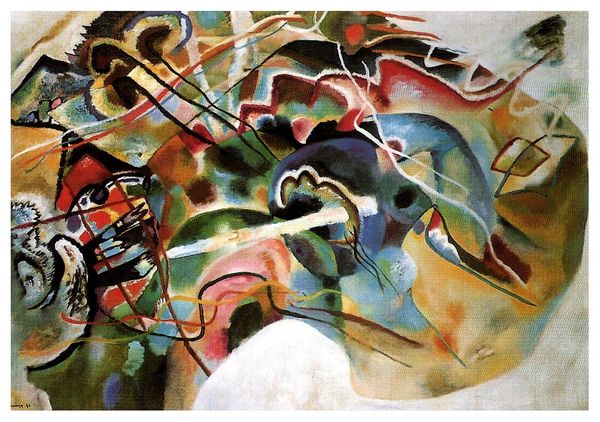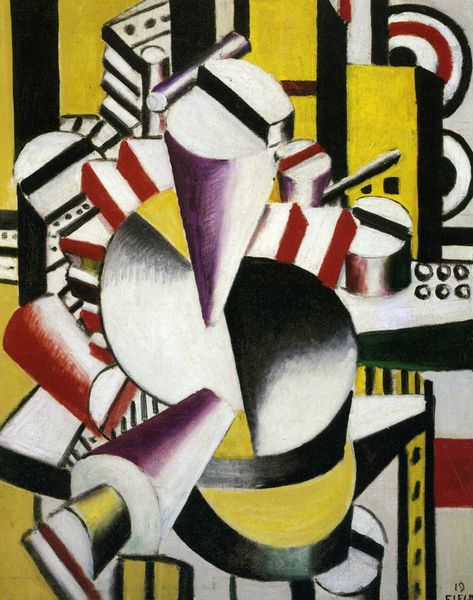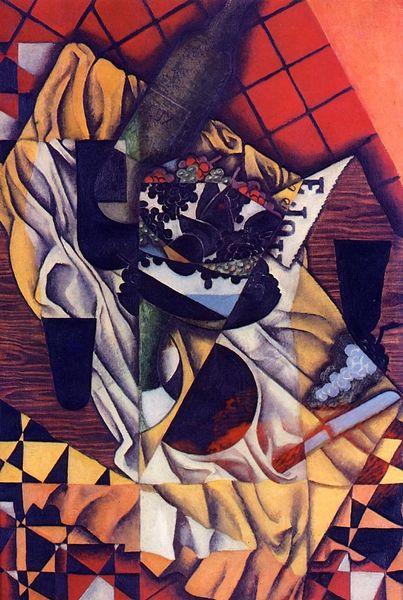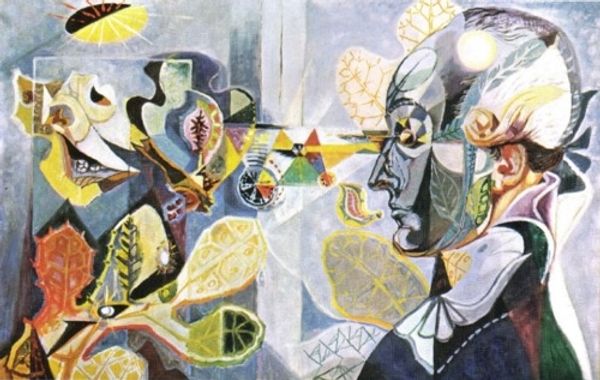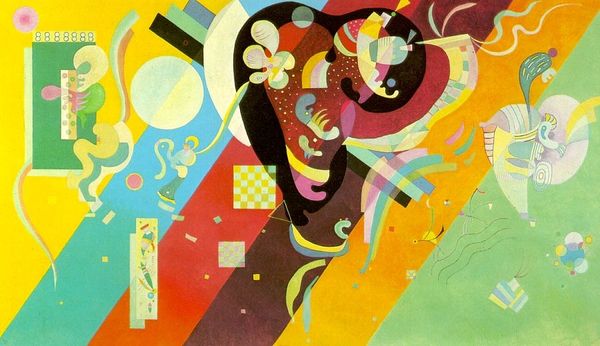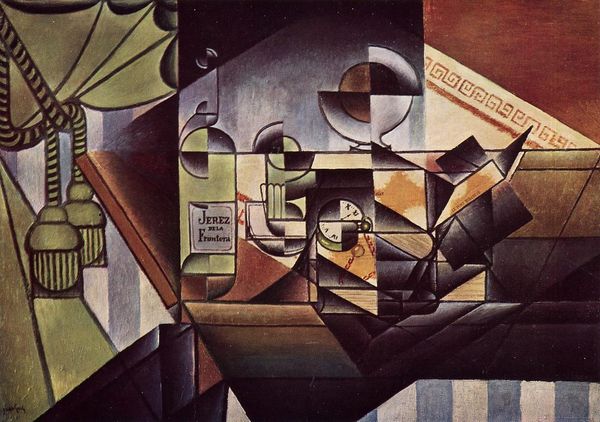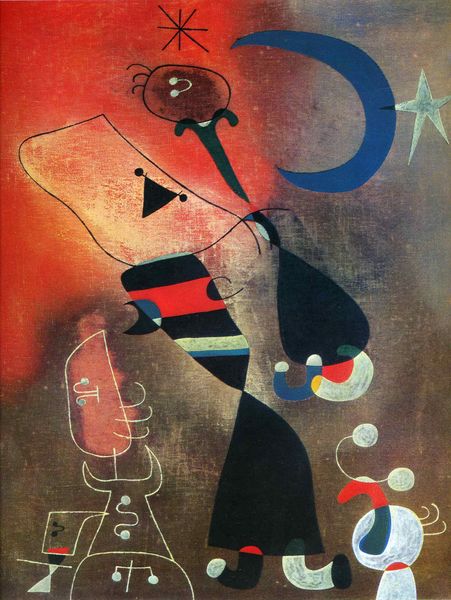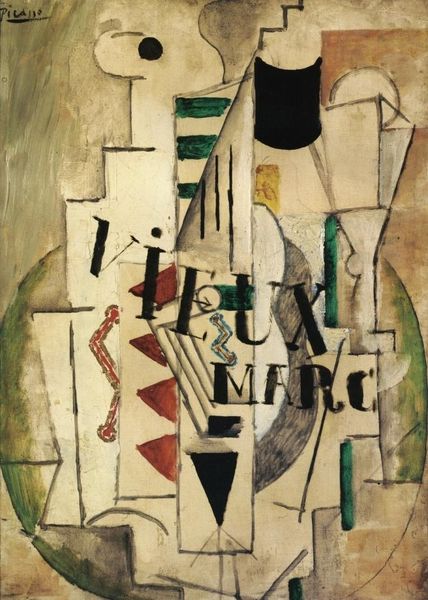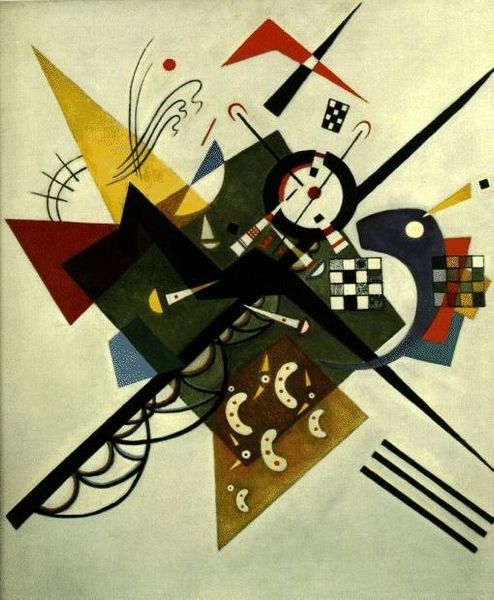
Copyright: Public domain
Editor: We're looking at "Green Composition," painted in 1923 by Wassily Kandinsky, using oil paint. I find the arrangement of geometric forms to be quite unsettling. It’s abstract, of course, but what do you see in this piece, beyond the obvious abstraction? Curator: The "obvious abstraction" is actually quite radical. Kandinsky wasn't just arranging shapes; he was dismantling representational art to construct a visual language that spoke directly to the viewer's inner state, beyond any literal meaning. What do you make of his colour choices here? Editor: The green feels dominant, almost…oppressive? But the contrasting shapes and colours surrounding it feel playful. Curator: Consider the time: 1923. Europe was still reeling from the aftermath of World War I. Traditional hierarchies were crumbling, new social movements were emerging, and artists like Kandinsky were searching for new ways to express the profound shifts in society. Do you see any parallels between the turmoil of that time and the fragmented, somewhat chaotic feel of the painting? The grid motif is prevalent, and what does a grid signify in our increasingly connected, yet individualized lives? Editor: I see the connection. The rigid lines contrast so heavily with the rest of the artwork. So you're saying it's more than just shapes; it's a reflection of societal disruption? The green feels like an organic entity trying to reassert itself amidst all this imposed order and societal rigidity. Curator: Precisely! It’s a push and pull of chaos and control, very current, don’t you think? Kandinsky believed art could be a spiritual force, a way to awaken consciousness and challenge oppressive structures, he sought the political and emotional release from geometric forms. How might we see this today? Editor: I never would have considered all of this at first glance. This piece is far more engaging now that you’ve given it context. Curator: It's about understanding art as a mirror reflecting societal anxieties and aspirations, challenging viewers to confront the issues of their time through a different lens. Thank you for taking the leap!
Comments
No comments
Be the first to comment and join the conversation on the ultimate creative platform.
